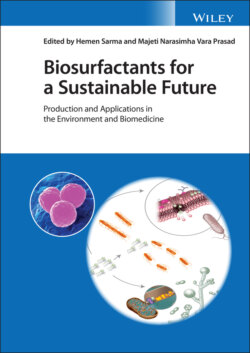Читать книгу Biosurfactants for a Sustainable Future - Группа авторов - Страница 43
3.4 Microorganisms
ОглавлениеDifferent groups of microorganisms, i.e. bacteria, fungi, and yeasts, are known as potential sources for the production of biosurfactants. Their production potential relies on various environmental and physiological conditions. Each microbe does have optimal conditions for its growth. However, the optimum growth conditions for cells are not always very suitable for the production of the desired product [14, 24]. The quantity of biosurfactants produced depends primarily on the type of microorganism and nutrient type. Most of the microorganisms that have a biosurfactant production capability have been screened from various industrial waste sites, i.e. contaminated soils, effluents, and wastewater discharge points [25]. Therefore, these organisms can grow on industrial byproducts and could be utilized for biosurfactant production under controlled conditions by using industrial waste as a carbon source. It was earlier reported that the nature, quantity, and quality of the carbon substrates and other media components (i.e. nitrogen, phosphorus, magnesium, iron, and manganese) mostly determine the type of microbial biosurfactant [16,26–28]. Similarly, microbial growth parameters, i.e. pH, temperature, agitation, and dilution rate, also influence the nature of biosurfactant produced in fermentation [29].
